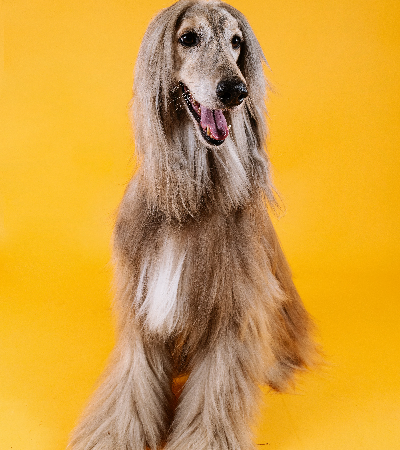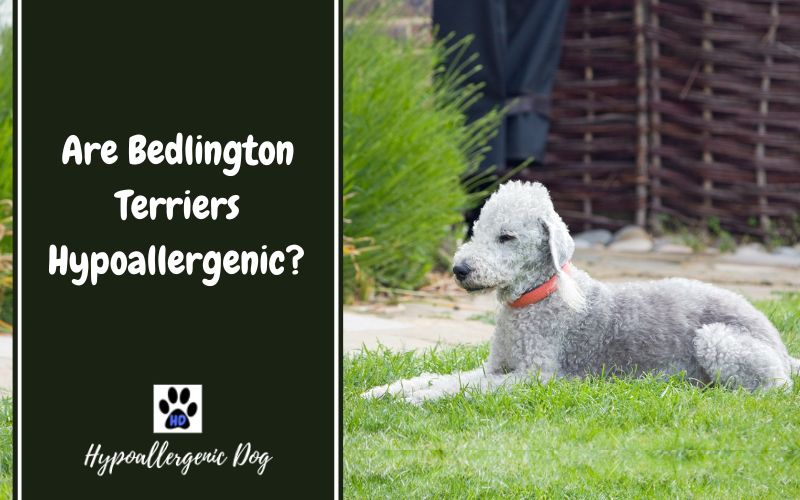Are Greyhounds Hypoallergenic Dogs?
Are Greyhounds hypoallergenic dogs? Unfortunately, Greyhounds are not considered to be a hypoallergenic dog breed. However, Greyhounds are only moderate shedders and may not be problematic for owners with mild dog allergies.
If you have allergies, you can’t guarantee any dog breed won’t affect you. But, there are some less prone to aggravating allergy symptoms. These canines are classed as hypoallergenic.
These dogs tend to shed very little and also don’t drool a lot. They may also have coats that are more like human hair than traditional dog fur — all of which help when it comes to allergies.
For more information, we’ve put together a guide on What Is a Hypoallergenic Dog?
How Much Do Greyhounds Shed?
Do Greyhounds shed? They do, but to be honest, they’re actually mild shedders — on a scale of one to 10, they would be at the lower end — around a four. Hence, if you only have mild allergies, you may be able to live with a Greyhound without dander affecting you.
They do however shed seasonally, like most dogs, so you can expect extra hair loss during those times.

How To Stop a Greyhound From Shedding To Reduce Allergens
Already welcomed a Greyhound into your home? Don’t worry, we’ve put together a few tips to help you combat hair loss.
1. Groom Your Greyhound
Thanks to their short, single coat, a Greyhound’s grooming needs are minimal.
However, you will need to brush your dog with a specific Greyhound grooming brush a few times a week. Regular brushing will help your pooch maintain that silky coat and also help to remove any shed hairs that haven’t fallen away.
2. Give Your Greyhound a Bath — But Not Too Often
You don’t need to worry about washing or bathing your Greyhound weekly. Unless they’re dirty, every six to eight weeks should be enough. Overdoing it could have the opposite effect and dry out their skin — encouraging shedding.
Greyhounds have thin skin that doesn’t offer much protection from their short coat. Hence, when washing, you’ll need to be as gentle as possible to avoid skin damage or irritation. Plus, use a fragrance-free dog shampoo.
3. A Healthy Coat Starts From Within
Your dog’s diet can influence how much or how little your Greyhound sheds. For example, if your dog is lacking nutrients, it will reflect in their coat and encourage shedding.
Therefore, feed your pooch well-balanced, healthy meals that include all the vitamins and minerals they need for their age and activity level. You could also look for one containing fish oil, which will also help reduce shedding.
4. Ensure Your Greyhound Gets Enough Exercise
Another shedding trigger is stress or anxiety — and like humans, it can affect canines. Exercise is an ideal way to relieve those tensions. Plus, let’s not forget Greyhounds are a high-energy breed — they love and need to run, sprint and chase to release that built up power.
What’s more, regular activity is good for their health, which like a well balanced diet, will tame shedding rates. Around an hour of walkies per day should be sufficient.
Greyhound Hypoallergenic Alternatives
Greyhounds make wonderful family pets, but they do shed, meaning they may not be an option if you have dog dander allergies. So, if you want a large, laid-back dog that’s also hypoallergenic, there are a few Greyhound alternatives that may be worthy of consideration.
This breed has a long luxurious coat but, surprisingly, is a very mild shedder. The Afghan Hound has been described as a Greyhound with a long coat, and like the Greyhound, they’re sensitive and need to be gently trained with love and patience. Long coat aside, the Afghan has a very similar body shape to a Greyhound and will be a good choice if you have allergies.
The Italian hypoallergenic Greyhound is a smaller breed than the standard Greyhound. They rarely shed dander and are not known to drool either. This breed shares the graceful and lean Greyhound body shape and is also a loving family dog. What’s more, the Italian is similar in temperament — sensitive, but also extremely affectionate and will love nothing more than cuddling up with their human.
The Bedlington Terrier is a lively and energetic dog but also incredibly gentle — same as the Greyhound. They make amazing family pets and are quite easy to train. However, this tail-wagger is considered a high-maintenance breed due to their tight, curly coat, which although doesn’t shed dramatically, must be brushed daily to keep it in tip-top condition.
Although only a medium-sized breed, these dogs come with bundles of energy and affection that quickly make up for their size. They’re an ideal family dog and are easy to train, even for a first-time pooch parent. And, like the Greyhound, they don’t require huge amounts of grooming — except for a regular brush to prevent matting.
If you suffer from dog dander allergies, unfortunately, a Greyhound isn’t going to be the perfect pet for you. Greyhounds have short, silky coats, but are considered mild-to-moderate shedders.
However, the smaller Italian Greyhound or the majestic Afghan Hound does have a hypoallergenic coat — proving there are options out there for people with dog allergies.
So, in conclusion, are Greyhounds hypoallergenic? No, unfortunately, they aren’t. However, if you do have allergies you can find doggies that are evenly matched — either physically or personality-wise to this fast-running four-legged friend.

Do Greyhounds Shed a Lot?
Greyhounds are mild-to-moderate shedders. They lose small amounts of their coat year round, and owners do notice more pet hair in the air during the changing seasons. The Greyhound’s coat is extremely deceiving, as it’s so short, people often assume this means they don’t shed.
What Dog Breeds Are Worst for Allergies?
Dogs that shed a lot of dander (dead skin cells attached to fur) and drool a lot are the worst breeds for people with allergies. If you do suffer from dog allergies, here are a few you should avoid:
- Golden Retriever.
- Labrador,
- Bull Dog.
- Basset Hound.
- Husky.
- Beagle.
- Pug.
- Boston Terrier.
Are Greyhounds Aggressive?
Greyhounds are not considered an aggressive breed. That said, at times they may appear pugnacious, but this behavior typically comes from fear. Greyhounds are sensitive creatures and may ‘act out’ when they’re feeling threatened or afraid.
Are Greyhounds Good for First-time Owners?
Yes, but you should also be prepared to put in a little extra work training them. This breed responds best to a positive and patient owner. Due to their gentle demeanor, a Greyhound will be difficult to train if you wish to use louder and more domineering forms of training.
How To Stop a Greyhound From Shedding?
It’s impossible to prevent a Greyhound (or any other dog breed) from shedding. However, you can reduce dog dander build-up inside your home by grooming outside and using an air purifier to filter allergens out of the air.
What Is the #1 Hypoallergenic Dog?
The Poodle — due to its popularity and how easily they are recognized. However, with breeds such as Labradoodles and Goldendoodles becoming increasingly popular this may all change. Why not take a look at our list of Hypoallergenic Dogs and find your favorite!











